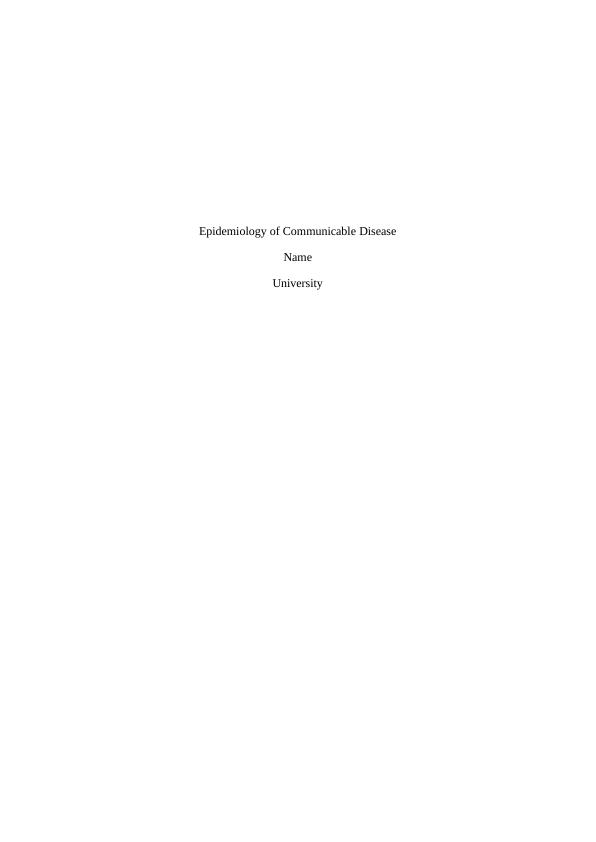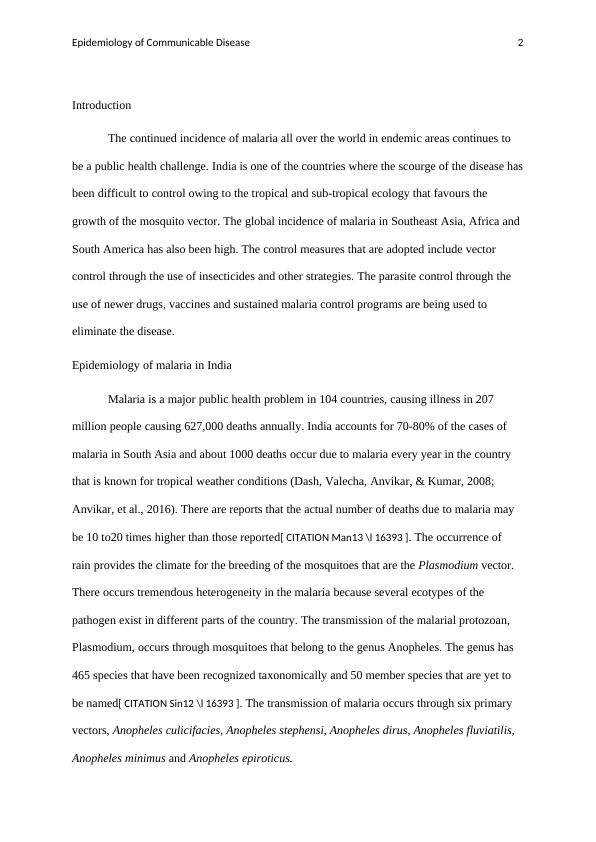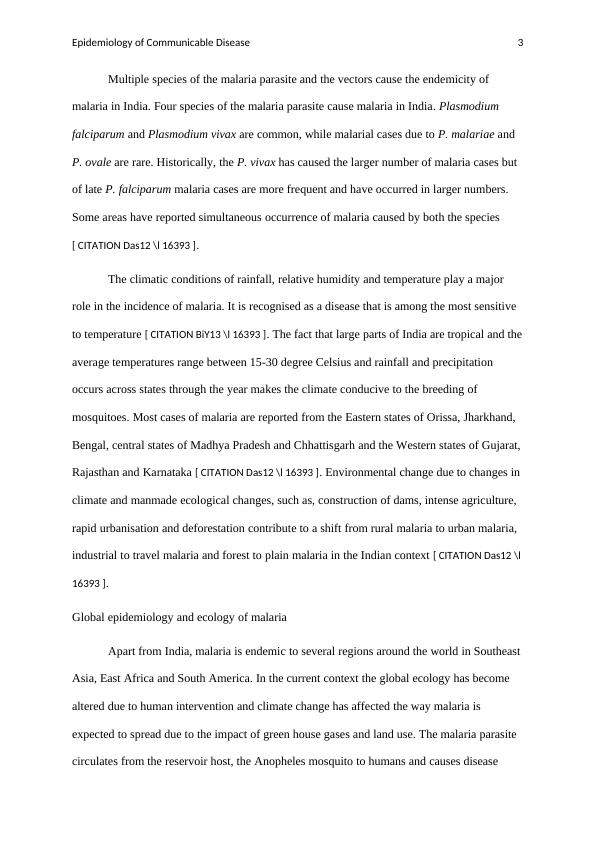Epidemiology of Communicable Disease | Assignment
8 Pages2183 Words300 Views
Added on 2019-11-19
Epidemiology of Communicable Disease | Assignment
Added on 2019-11-19
ShareRelated Documents
Epidemiology of Communicable DiseaseNameUniversity

Epidemiology of Communicable Disease2IntroductionThe continued incidence of malaria all over the world in endemic areas continues to be a public health challenge. India is one of the countries where the scourge of the disease hasbeen difficult to control owing to the tropical and sub-tropical ecology that favours the growth of the mosquito vector. The global incidence of malaria in Southeast Asia, Africa and South America has also been high. The control measures that are adopted include vector control through the use of insecticides and other strategies. The parasite control through the use of newer drugs, vaccines and sustained malaria control programs are being used to eliminate the disease.Epidemiology of malaria in IndiaMalaria is a major public health problem in 104 countries, causing illness in 207 million people causing 627,000 deaths annually. India accounts for 70-80% of the cases of malaria in South Asia and about 1000 deaths occur due to malaria every year in the country that is known for tropical weather conditions (Dash, Valecha, Anvikar, & Kumar, 2008; Anvikar, et al., 2016). There are reports that the actual number of deaths due to malaria may be 10 to20 times higher than those reported[ CITATION Man13 \l 16393 ]. The occurrence of rain provides the climate for the breeding of the mosquitoes that are the Plasmodium vector. There occurs tremendous heterogeneity in the malaria because several ecotypes of the pathogen exist in different parts of the country. The transmission of the malarial protozoan, Plasmodium, occurs through mosquitoes that belong to the genus Anopheles. The genus has 465 species that have been recognized taxonomically and 50 member species that are yet to be named[ CITATION Sin12 \l 16393 ]. The transmission of malaria occurs through six primary vectors, Anopheles culicifacies, Anopheles stephensi, Anopheles dirus, Anopheles fluviatilis, Anopheles minimus and Anopheles epiroticus.

Epidemiology of Communicable Disease3Multiple species of the malaria parasite and the vectors cause the endemicity of malaria in India. Four species of the malaria parasite cause malaria in India. Plasmodium falciparum and Plasmodium vivax are common, while malarial cases due to P. malariae and P. ovale are rare. Historically, the P. vivax has caused the larger number of malaria cases but of late P. falciparum malaria cases are more frequent and have occurred in larger numbers. Some areas have reported simultaneous occurrence of malaria caused by both the species[ CITATION Das12 \l 16393 ]. The climatic conditions of rainfall, relative humidity and temperature play a major role in the incidence of malaria. It is recognised as a disease that is among the most sensitive to temperature [ CITATION BiY13 \l 16393 ]. The fact that large parts of India are tropical and theaverage temperatures range between 15-30 degree Celsius and rainfall and precipitation occurs across states through the year makes the climate conducive to the breeding of mosquitoes. Most cases of malaria are reported from the Eastern states of Orissa, Jharkhand, Bengal, central states of Madhya Pradesh and Chhattisgarh and the Western states of Gujarat,Rajasthan and Karnataka [ CITATION Das12 \l 16393 ]. Environmental change due to changes in climate and manmade ecological changes, such as, construction of dams, intense agriculture, rapid urbanisation and deforestation contribute to a shift from rural malaria to urban malaria, industrial to travel malaria and forest to plain malaria in the Indian context [ CITATION Das12 \l 16393 ].Global epidemiology and ecology of malariaApart from India, malaria is endemic to several regions around the world in SoutheastAsia, East Africa and South America. In the current context the global ecology has become altered due to human intervention and climate change has affected the way malaria is expected to spread due to the impact of green house gases and land use. The malaria parasite circulates from the reservoir host, the Anopheles mosquito to humans and causes disease

End of preview
Want to access all the pages? Upload your documents or become a member.
Related Documents
Social and Economic Impact of Plasmodium Falciporumlg...
|23
|7719
|73
Malaria Falciparum: Microbiology, Host Response, Epidemiology and Treatmentlg...
|14
|4057
|159
Report on Malaria and Change in Climatelg...
|5
|938
|115
Malaria Informative Pamphletlg...
|2
|1763
|343
The different types of malarialg...
|5
|804
|25
Anopheles gambiae: Recent Findings and Control Measureslg...
|9
|2261
|140
